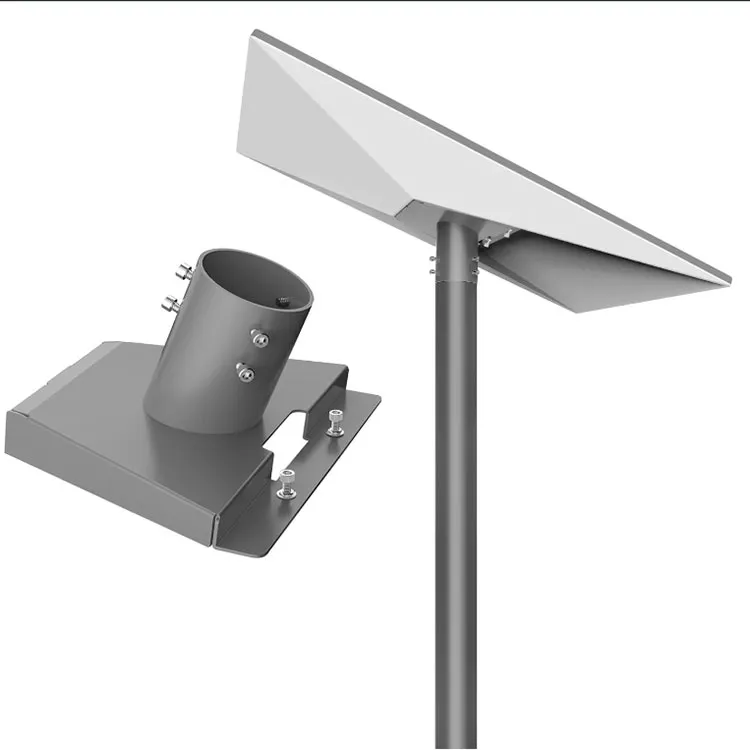How Stainless Steel Alloys Impact the Durability and Performance of Satellite Dish Brackets
2024-11-15
Satellite dish brackets are essential components in any satellite dish system, providing the support and stability needed to hold the dish in place. Given that these brackets are typically installed outdoors and exposed to harsh weather conditions, it is crucial to select a material that can withstand corrosion, high-stress conditions, and long-term wear. Stainless steel is a popular choice for satellite dish brackets due to its combination of strength, durability, and corrosion resistance. However, not all stainless steel alloys are created equal.
In this blog, we will dive deeper into the impact of different stainless steel alloys on the longevity and performance of satellite dish brackets. We’ll also discuss the critical role of corrosion resistance in determining the best alloy for your needs.
1. The Role of Corrosion Resistance in Satellite Dish Brackets
Corrosion resistance is perhaps the most important factor to consider when choosing stainless steel for satellite dish brackets. Since the brackets are typically mounted outdoors, they are exposed to environmental conditions such as rain, humidity, saltwater, and pollution, all of which can lead to rust and degradation over time. Therefore, selecting an alloy with excellent corrosion resistance is essential for ensuring the longevity and reliability of the bracket.
- 304 Stainless Steel: Grade 304 is one of the most widely used stainless steels because it offers a good balance between corrosion resistance and cost-effectiveness. It performs well in most outdoor environments and is resistant to rusting under normal conditions. However, it can show signs of surface rust in highly humid or coastal areas, where exposure to saltwater can accelerate corrosion.
- 316 Stainless Steel: For satellite dish installations in coastal regions or other environments with high levels of salt and moisture, 316 stainless steel is the best choice. The addition of molybdenum in 316 enhances its ability to resist corrosion from chlorides and seawater, making it ideal for high-humidity or marine environments. This alloy’s exceptional corrosion resistance ensures that your satellite dish bracket will last much longer in these conditions.
- 430 Stainless Steel: This is a more affordable option that offers good mechanical strength but lacks the high corrosion resistance of grades 304 and 316. Grade 430 is typically used in environments that are not prone to high levels of moisture or salt. While it is sufficient for dry, urban, or suburban environments, it is not recommended for coastal areas or places where frequent rain or humidity is common.
2. Mechanical Strength and Environmental Stress
While corrosion resistance is essential, the strength and structural integrity of the stainless steel alloy also play a crucial role in the performance of the satellite dish bracket. These brackets are subject to mechanical stress from wind, snow, and the weight of the satellite dish itself. Choosing a stainless steel alloy with sufficient mechanical strength is essential to ensure that the bracket can handle these forces without bending or breaking.
- 304 and 316 Stainless Steel: Both grades offer strong mechanical properties, including tensile strength and yield strength, making them suitable for heavy-duty applications like satellite dish installations. These alloys are strong enough to withstand the physical stresses of outdoor environments, including high winds and snow loads.
- 430 Stainless Steel: While 430 stainless steel has adequate strength for many applications, it is not as strong as 304 or 316. In high-stress environments or for larger satellite dishes, 430 may not be the best option. It can work in environments with minimal physical stress, but it is less reliable under harsh conditions.
3. Cost vs. Performance: Finding the Right Balance
While 316 stainless steel offers superior corrosion resistance, it is also the most expensive option. For many residential or commercial applications where severe weather conditions are not a concern, 304 stainless steel offers a cost-effective solution with adequate performance.
However, if your satellite dish is located in a coastal area, high-humidity region, or an environment with harsh chemicals or salts, the extra cost of grade 316 can be justified by its extended lifespan and reduced maintenance needs.
Selecting the appropriate stainless steel alloy for satellite dish brackets is crucial to ensuring their performance, durability, and longevity. Grade 316 stainless steel is the ideal choice for harsh environments with high humidity, salt exposure, or corrosive conditions. For general outdoor use in more temperate climates, 304 stainless steel offers a cost-effective option that still provides good corrosion resistance and strength. Grade 430, while less expensive, is best suited for environments with minimal corrosion risk.
By understanding the differences in stainless steel alloys and considering the local environmental conditions, you can ensure that your satellite dish bracket will withstand the test of time, providing stable support for your satellite dish without the worry of corrosion or premature wear.



